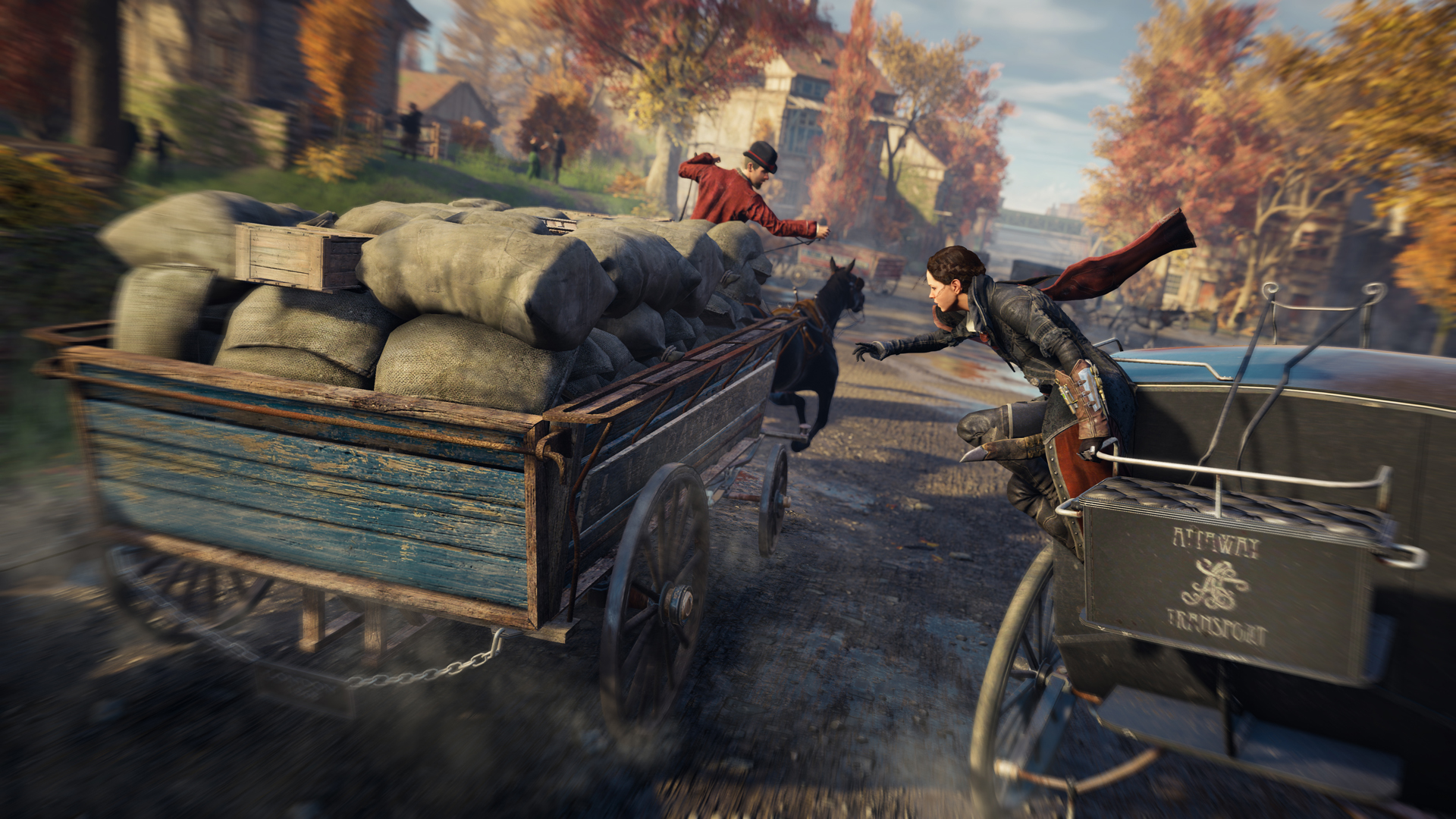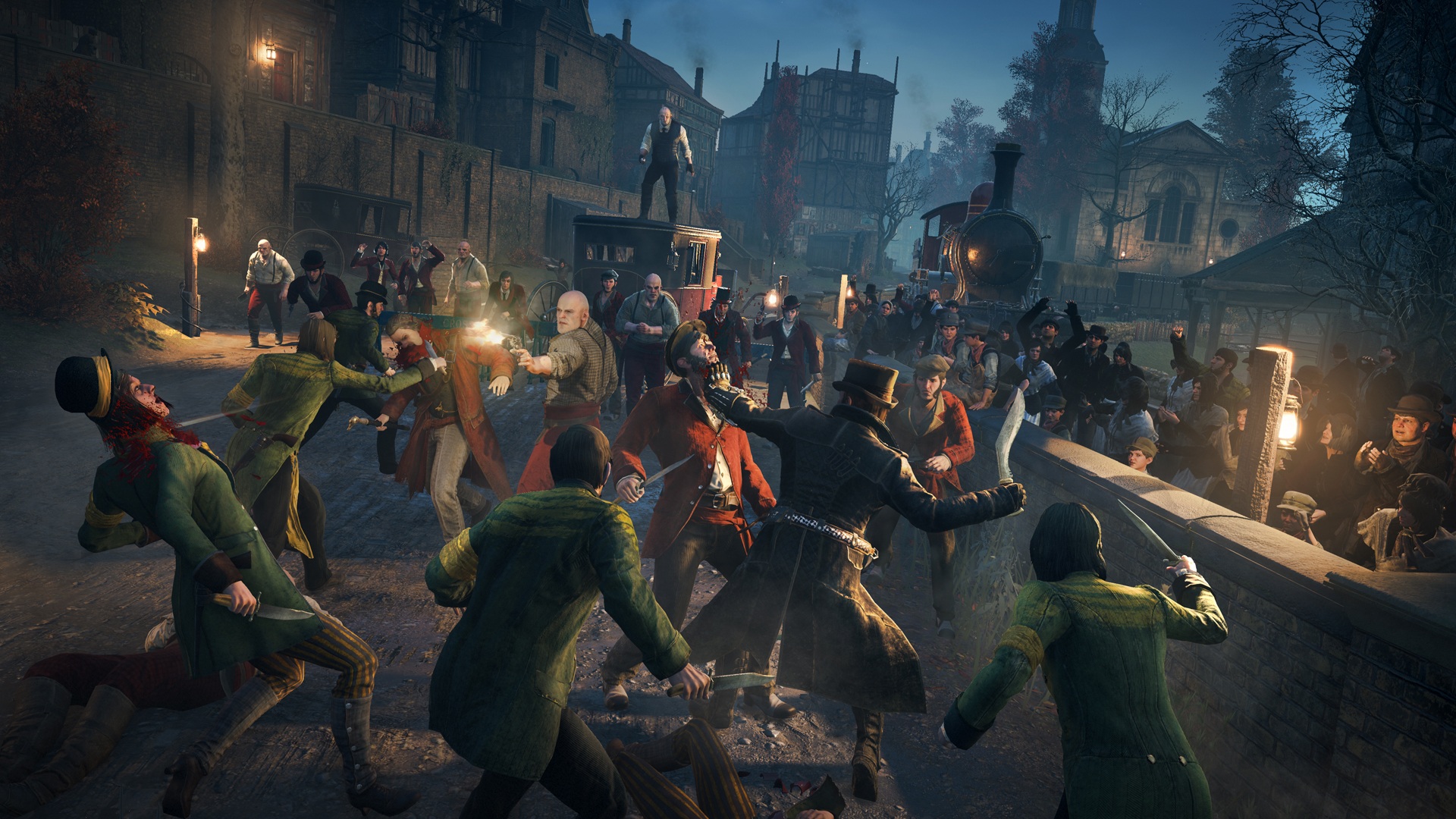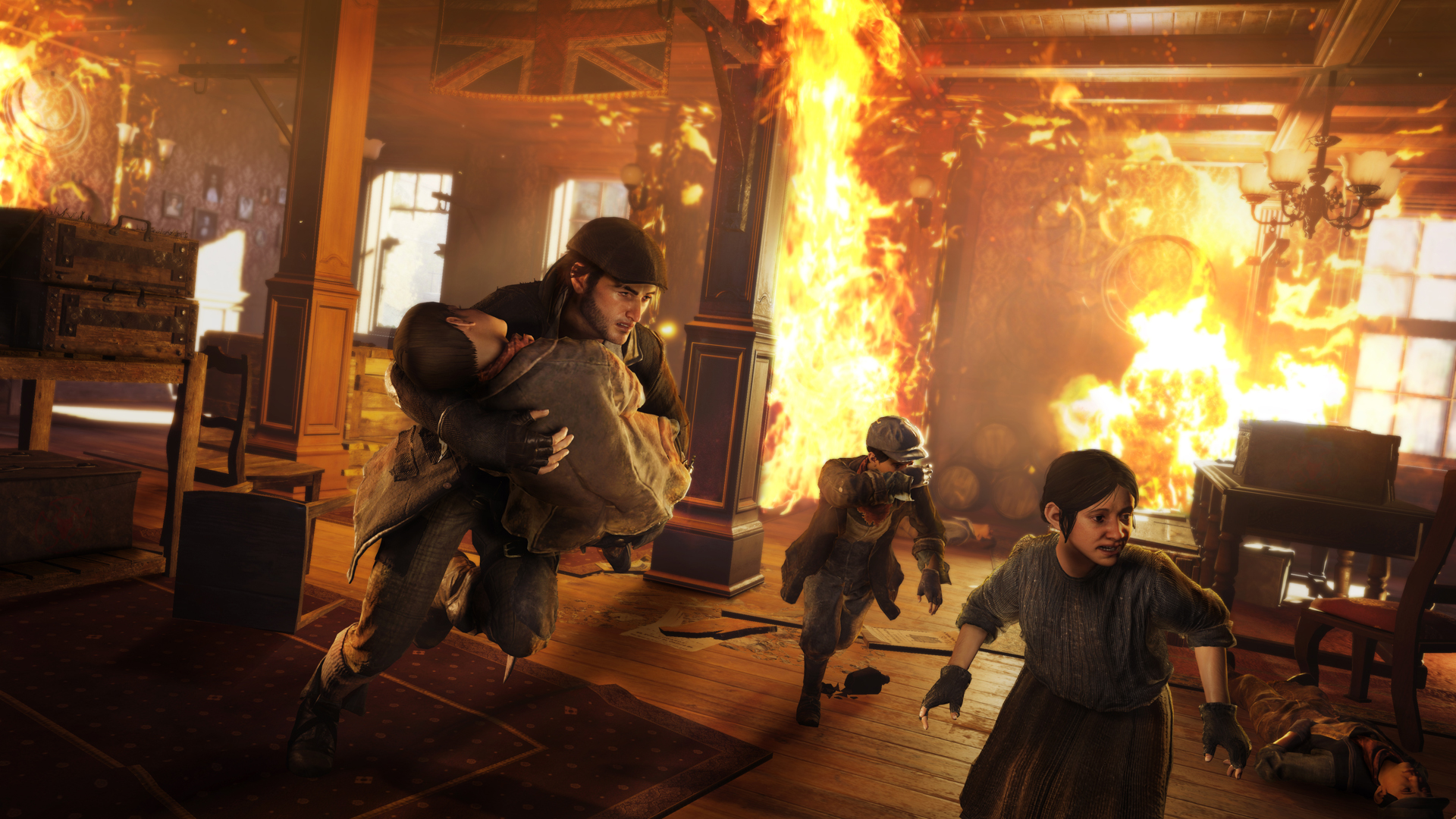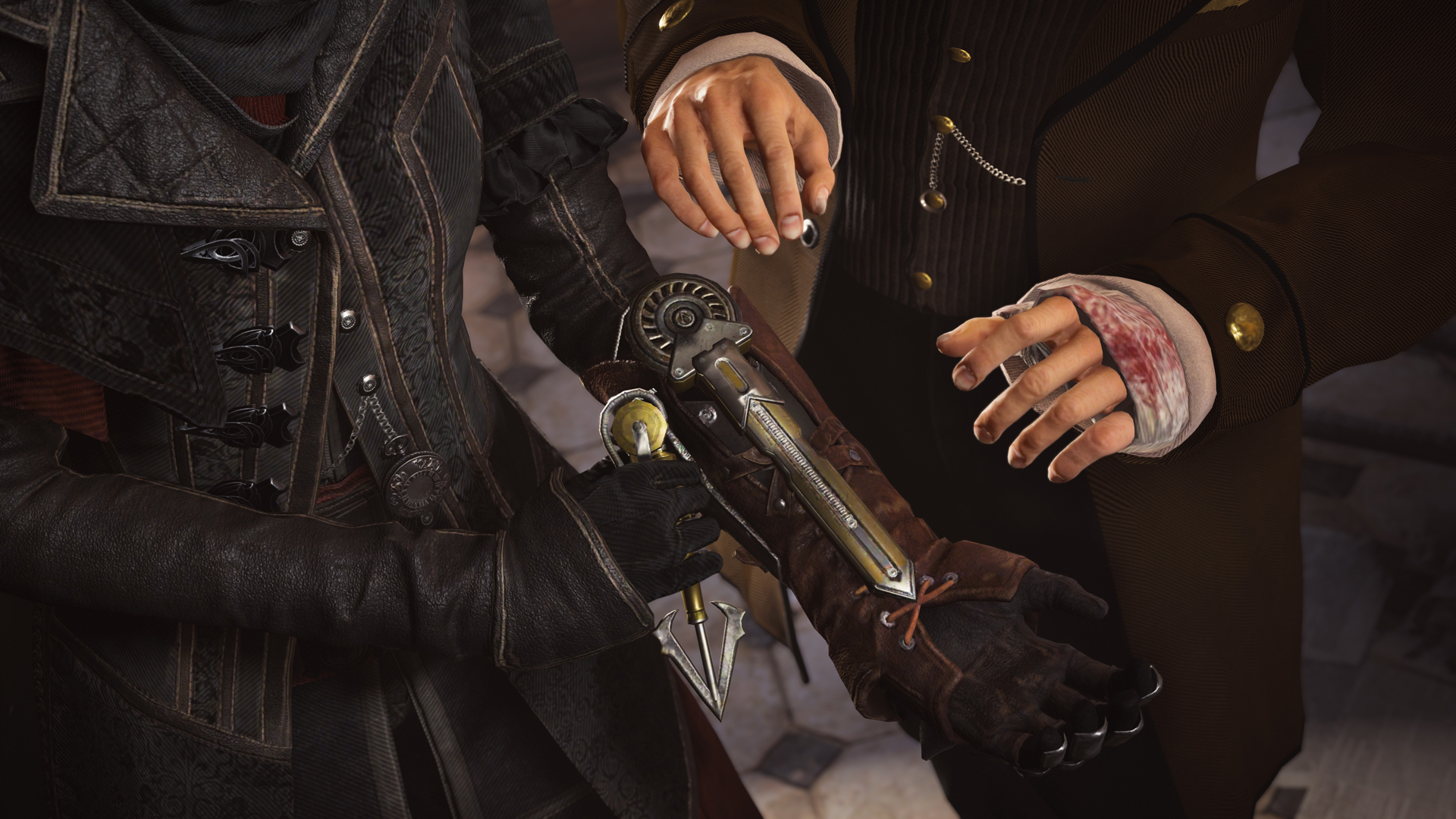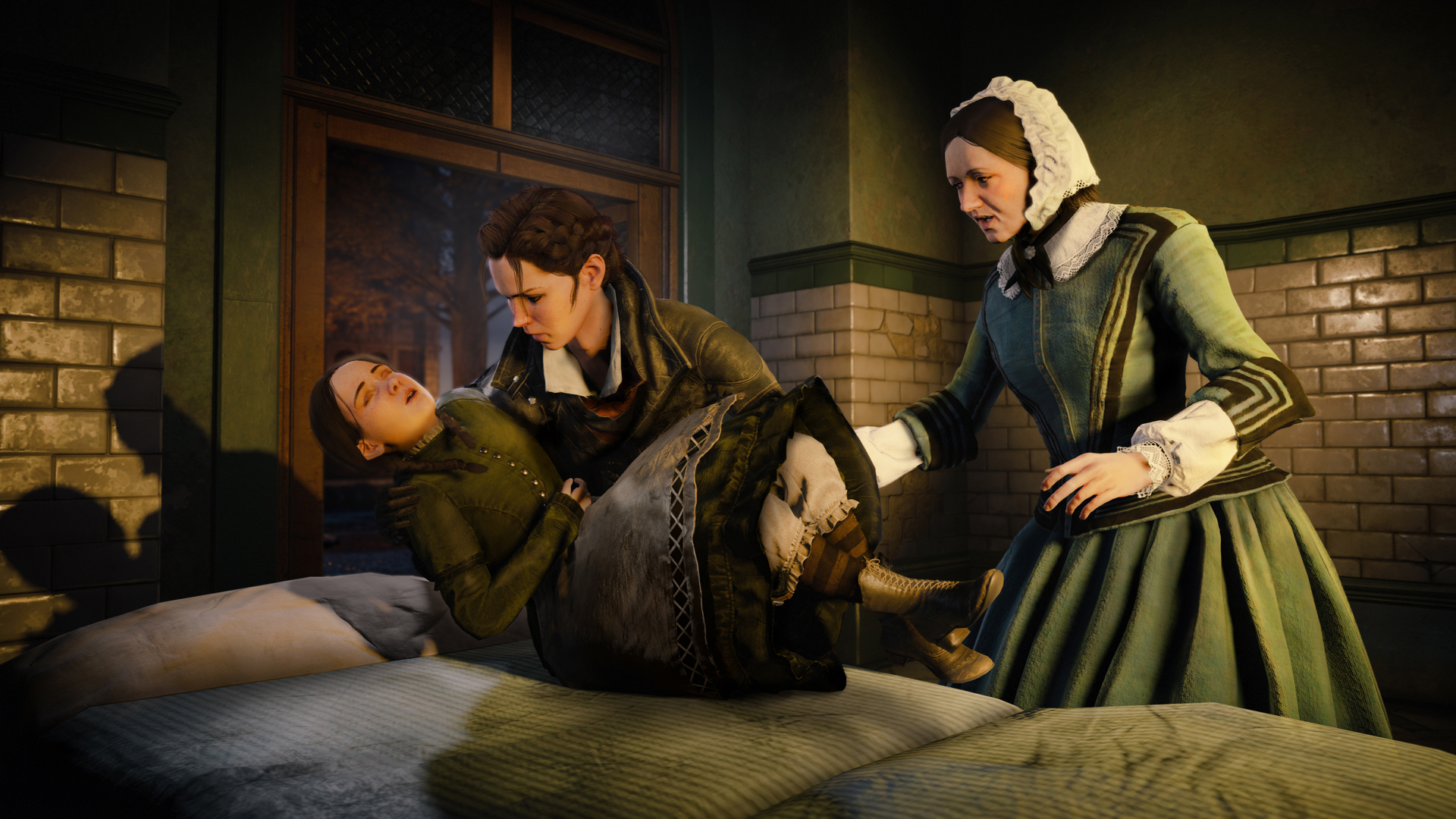You aim your zip line at specified tether points, so it’s not truly open-world. But they are legion. As a result, if you get good with timing, you start to feel like a Victorian Spider-Man — if Spider-Man could stop in mid-swing, target two bad guys underneath him, and drop down to perform a sweet double-assassination move.
With the zip line, carriages, fast travel, and other shortcuts, London’s streets feel huge and still incredibly quick to navigate. It’s a fun combination.
Grand Theft Equus
Syndicate adds vehicles to Assassin’s Creed (no, your pirate ship didn’t count), and they offer a Grand Theft Auto-lite feel to the streets. You can hijack any vehicle, ram it into enemies and other carriages, hide bodies inside them, and use them to race through the streets.
One of your upgrades for the Rooks, your crew of gang members, gives them vehicles, which means you can hitch a friendly ride from many streetcorners. If you steal a cart, bad guys will alert as you ride by, as will the police. Or perhaps that was just my poor driving skills. I spent a lot of time riding down pedestrians, lampposts, and other carriages.
Steering is loosey-goosey (think early GTA) but fun. One enjoyable mission from Charles Darwin has you shake down someone for information by hijacking their carriage and then deliberately destroying it by ramming it into things. I ruled at that mission.
Damage shows up dynamically on the carriages as you destroy them, and it’s worth noting that one of the more amusing minor display glitches shows up here. If your carriage is drawn by a single horse, and you scrape that horse against a stone wall or another carriage — during a turn, say — the horse will throw off sparks, as if it were a carriage. Perhaps their harnesses are made of flint?
You can get away from Syndicate London’s bobbies in a stolen carriage much more easily than GTA’s police, but that’s really true throughout the game. When I got myself into trouble with too many enemies, it was almost always easy to scale a building and lose them or zip line away. Both your enemies and your gang members are terrible at climbing, so by the time they scale the stairs in the building and pop out a skylight, you’ve zip lined halfway across the neighborhood.
In carriages, you can bail out while they’re still moving, disappearing into the crowd or onto a roof before your pursuers know where you’ve gone.
What you won’t like
About that story …
The evil Templars are attempting to take over London, and they have at least one Piece of Eden (powerful items that might help them control the city). The Creed wants the Frye twins to wait for instructions, or reinforcements, or something. But they’re impetuous! Instructions be damned! Which pretty much boils down to all the motivation these two seem to have for most of the things they do.
So they perform some pretty fun scenes on a train and then end up in London, where they meet Henry Green, who brings the smolder this time around. After that, they run around the city, chasing down signs of Eden things and doing favors for people to gain the opportunity to fight gang leaders for control of London’s neighborhoods.
Evie’s the “We should stop the Templars from using Pieces of Eden!” one and Jacob’s the “We should build the Rooks and rule London!” one, but it takes forever to develop anything that could be considered drama. The characters themselves are likable enough, and you’ll probably enjoy spending time with them. But they don’t seem to care much about what they’re doing for a very long time, so neither will you.
Also, pet peeve: I’m delighted to have historical figures like Charles Darwin and Charles Dickens and Alexander Graham Bell show up in games like Syndicate, even if they’re shown doing silly things not at all related to their real lives. But just because someone is a famous scientist doesn’t make him a chemist or an engineer or a developer of hallucinogenic darts. Or able to build and repair zip line guns.
Side missions often bring the meh
Side missions are a mainstay of Assassin’s Creed, since they often offer more content than the main sequence storyline missions. In Syndicate, you can progress through the game doing almost nothing but sequence missions if you choose; the leveling process is fairly smooth, so it works out fine.
But side missions offer some nifty gear, recipes, faction points with people you want to be friends with, and the like. Syndicate does try to offer some variety: You’ll be sent out to knock someone off, spy on them, chase them down and tackle them, take them hostage, collect things, or the like. But it does start to feel a little similar after a while.
You might save children from a factory for a particular group of über-powerful urchins, and then you turn around and save adults in another factory for someone else. The bonus objectives (special conditions you have to meet) might be different, but a lot of those overlap as well.
Crafting is thin and largely unnecessary
Crafting supplies pop up everywhere, and pounds (Syndicate’s currency) steadily pile up as well. You can make gear upgrades, but they generally offer middle of the road power or stats and are soon replaced. I ended up using most materials to just upgrade pieces of armor or weapons I obtained through missions or along the way.
Ubisoft’s store is gently present here: You can buy additional resources to level through the game faster, buy upgrades faster, and the like. Because Syndicate is a single-player affair — no multiplayer or online play at all — these feel a little like trading real cash for cheat codes, a time-honored tradition in gaming. You do not need, nor will you likely feel too tempted, to spend actual money to complete this.
If you must have in-game transactions, these feel unobtrusive, and not like anyone is putting parts of the game behind a paywall.
So our framerates purr, but we gave up our pretty people
Sometimes the scenery in Syndicate catches my eye, the hazy smog of London hanging over the rooftops and the sun reflecting just so on the leather edges of Evie’s cape in front of me, and it just makes me smile. The dynamic shadows and lighting combine to give the place a subtle realism that sometimes grabs you.
And then you see a person up close.

